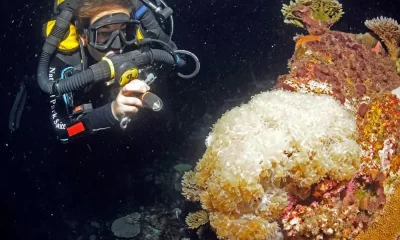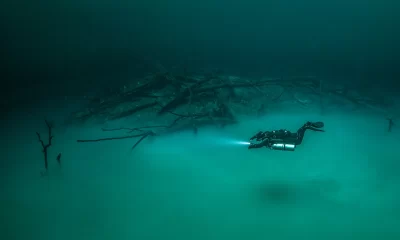Education
Off the Deep End? What You Should Know About Pool Chemistry
Now that pools are getting busy again for spring and summer training, we thought it fitting for us to take a deep dive into pool chemistry. Fortunately, science writer Reilly Fogarty’s got the scoop on what’s cooking in your favorite pool. Water sports anyone? Dive in.
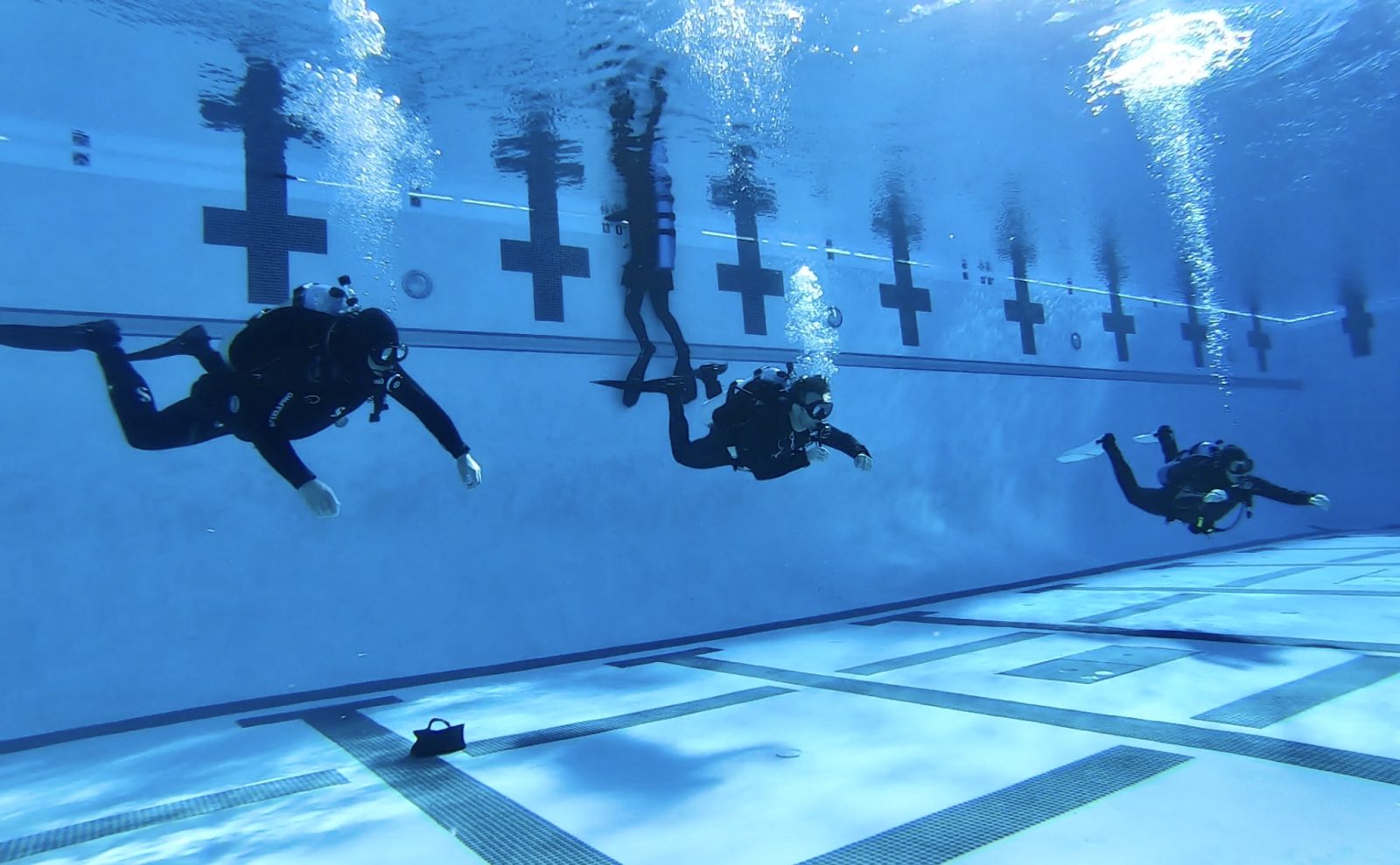
By Reilly Fogarty
Header image by GUE instructor Steve Millington, SOCAL SCUBA DIVING
When divers dream of adventure, it’s not often that their mind wanders to images of the shallow end of the local YMCA pool. Adventures may not often take place in waist-deep water, but a chlorinated escape from our terrestrial confines can do a great deal for our health and safety. Between fitness, training, and cooling off on a hot summer day, you’ll spend a lot of your life in a pool, so you should know what you’re swimming in. Here’s the scoop on what’s going on in your favorite pool.
Swimming in History
Pools have been used for recreation, religion, and fitness for longer than history has been recorded. The first man-made swimming pool is thought to be the Great Bath of Mohenjo-Daro, a thirty-by-twenty-three foot bath created sometime in the 3rd century BCE. This structure was predated by a pair of religious pools located in Sri Lanka built nearly a century before. The first heated pool is credited to Gaius Maecenas, who may have been the architect of a bath heated by fire pits in Rome around the first century BCE. It’s not hard to see why ancient societies wanted the pools—from religious ceremonies to block parties, the uses for pools haven’t changed dramatically over the centuries.

From these earliest pools sprouted dozens of similar structures across the globe. The logistics of building and maintaining the pools limited their use to only the most affluent until their popularity exploded during the mid-19th century with the rapid advent of new building technologies. Six indoor pools were built in London in 1837, and then the creation of the modern Olympic Games in 1896 rapidly spread public demand for public pools.
Leaps in technology in the 20th century brought chlorination and filtration systems to pool design, and made pools easier to both build and maintain. The brick and tar construction of early history gave way to a flexible alternative, gunite, and soon after above-ground pool kits hit the market. Once the cost to build a pool dropped to levels attainable by common folk, they came to American backyards in droves. How to keep all those pools clean, however, was another issue.
Pathogens & Pool Noodles
Once upon a time, the only way to clean a pool was to drain it and refill it regularly. Pools were often built on downward slopes to help drain them, and the water was cycled frequently. In the late 19th century people began to worry about large bodies of freshwater becoming disease ridden.
The first attempt to sterilize a pool in the U.S. using chlorine was at Brown University in 1910. The 75,000-gallon/284 kiloliters Colgate Hoyt Pool was chlorinated by graduate student John Wymond Miller Bunker, who used a bleaching powder, hypochlorite of lime (calcium hypochlorite), which had been recently discovered as a method to treat drinking water, at a concentration of 0.5 ppm. The pool remained sterile for four days. Bleaching powder, including both calcium hypochlorite and sodium hypochlorite (both a form of chlorine) instantly became the standard in pool sanitation, and spread across the world.
Laws dictating pool sanitation appeared, and soon after diatomaceous earth filters hit the market. The filters use powdered rock to capture particles in the water and are frequently combined with skimmers, devices that filter larger objects from the surface of the pool through a mechanism similar to a storm drain. Pool use continued to increase in popularity and owners dabbled in a number of purification systems, from ultraviolet light, to ozone gas, to the chlorine and salt chlorinator systems most pools use today.
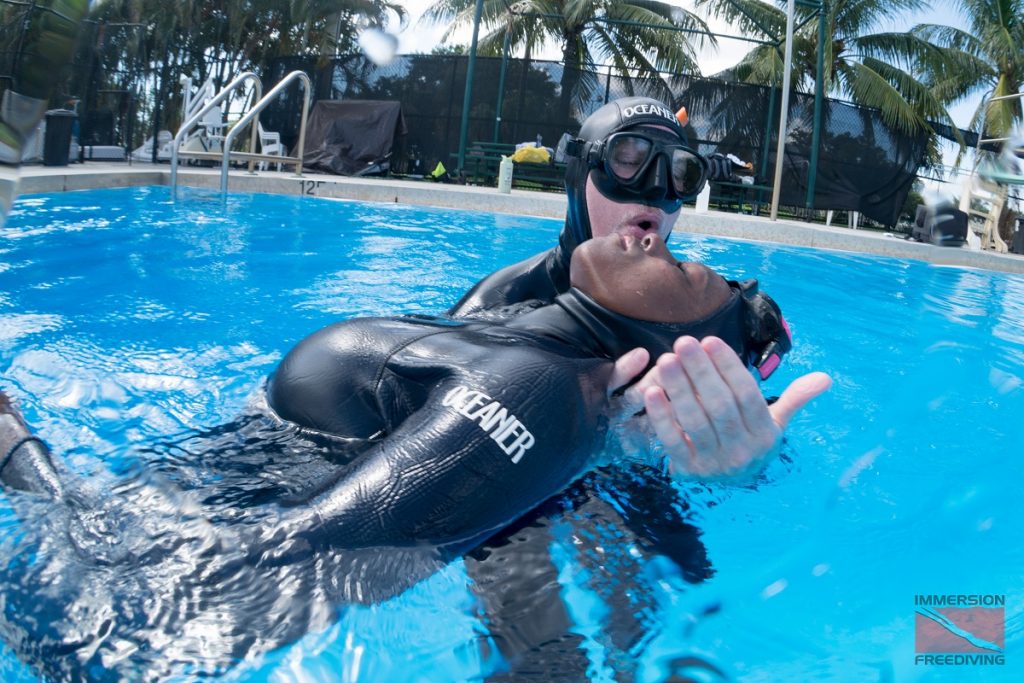
Purification systems aren’t without their flaws. Put too much chlorine in a pool and you risk irritating your eyes and airway, causing rashes, breathing difficulties or even chemically burning the fine hairs off your body. More commonly, the combination of chlorine with the ammonia found in urine can create compounds called chloramines, or cyanogen chlorides. Chloramines cause the typical “over-chlorinated pool smell” we associate with hotel pools, and can cause skin and eye irritation, as well as exacerbate allergies or asthma. Cyanogen chloride can interfere with the body’s ability to use oxygen and can be fatal—thankfully it’s volatile and rarely forms in dangerous concentrations and degrades quickly when it does.
Pee isn’t the biggest concern for pool hygiene, despite the fact that swimmers leave, on average, about a shot glass worth of urine every time they jump in.
Pee isn’t the biggest concern for pool hygiene, despite the fact that swimmers leave, on average, about a shot glass worth of urine every time they jump in. [Ed.note: Fitness and competitive swimmers urinate in the pool!] We tolerate the hazard and complications of chlorination because of the microbial risks associated with large numbers of people effectively bathing together. The World Health organization (WHO) points to Shigella and Escherichia coli O157 as bacteria of particular concern for swimmers.

Bacterial outbreaks are relatively rare among pool use but these bacteria, as well as a host of viruses, protozoa and fungi can be passed from swimmer to swimmer with relative ease. Both bacteria cause vomiting fever and diarrhea, although E. Coli O157 can cause hemorrhagic colitis and haemolytic uraemic syndrome (HUS) in severe cases. Giardia and Cryptosporidium are two protozoa that also pose a risk to swimmers, both being carried with fecal material. Both are highly resistant to disinfectants, are very infectious, and are shed in high densities by those infected. Diarrhea, cramping, vomiting and fever are common symptoms of both. Adenovirus, hepatitis A, norovirus and echovirus round out the list of common contagions in pool water, each with their own unique symptoms.
There are a number of less common viruses and bacteria that can pose a risk to swimmers, but it’s worth noting that very few instances of group infection can be traced back to pool water. For the most part, modern pools are quite safe, and a combination of sterilization (to kill pathogens) and filtration (to control fecal release and other contaminants) can effectively keep a pool safe.
The Mystery of Chlorine
Interestingly, the mechanism of chlorine sterilization is not fully understood. Research from the mid-20th century seemed to show that chlorine would react with some biomolecules as a result of it’s division into hypochlorite and hypochlorous acid in water. Later work indicated that chlorine likely reacted with a variety of bacterial targets and specific nucleic enzymes and membrane lipids – this was called the “multiple hit” theory, as explained in this 1998 Scientific American article titled, “How does chlorine added to drinking water kill bacteria and other harmful organisms? Why doesn’t it harm us?”

More recent work suggests that chlorine specifically attacks cell walls by altering them physically and chemically, killing microorganisms by interrupting cell functions. Mechanically this theory involves a few steps. First chlorine disrupts the structure of the cell wall. This allows components of the cell that are critical to its function to escape, which causes a chain reaction of function termination, and eventually cell termination.
What this means effectively is that chlorine can kill a wide range of pathogens in relatively low doses. The concentrations used in public pools and water supplies are carefully monitored and designed to be small enough that ingestion of a normal amount allows only enough chlorine into the intestinal tract as can be neutralized by the action of the digestive system. That’s not to say that chlorine isn’t toxic – it can be extremely dangerous and must be handled with care – but like many poisons the dose determines the lethality. Because the concentrations used in pools are so low, the amounts that humans are likely to ingest are not harmful.
At low concentrations chlorine in the body can be neutralized by harmlessly reacting with food in our stomachs, material in our intestinal tracts, or by the acidic environment of the stomach.
At low concentrations chlorine in the body can be neutralized by harmlessly reacting with food in our stomachs, material in our intestinal tracts, or by the acidic environment of the stomach. The Environmental Protection Agency (EPA) works closely with water utilities and environmental groups to reassess safe chlorine levels in drinking water and pools on an regular basis, and these guidelines along with those from the CDC should be used to determine what chlorine concentrations are safe for normal use.
Bug Count
The Centers for Disease Control do provide some recommendations for specific chlorine and levels for pool use. Free chlorine in a concentration of a minimum of 1 part per million (ppm) in a pool, or 3 ppm in a hot tub, and a pH of 7.2-7.8 provides a safe concentration for swimmers and should kill most bacteria within a few minutes. Because bacteria levels are so difficult to measure in real time, testing is expensive, and equipment is scarce, regulations focus on mandating minimum free chlorine levels that are based on the environment rather than changing sanitation regulations that are based on bacterial load. This works on the assumption that known chlorine concentrations will kill common bacteria in a reasonably effective manner, and free chlorine indicates a sanitized body of water with a margin of safety.
Something that might be confusing is the common chlorine smell found around high-traffic pools. This is actually caused by chloramines, the byproduct of a reaction of chlorine and urine, and can give off a strong odor and irritate the eyes, skin and airway. While the smell would seem to indicate that there is too much chlorine in the water, the opposite is actually true—eliminating the smell requires the superchlorination of the pool. Superchlorination, or “shocking” oxidizes the chloramines and leaves only free chlorine by flooding the body of water with chlorine levels five to ten times the normal concentration. Bathing during superchlorination is ill-advised, but the process should be done once a month in most cases, or once a week in hot weather.
The risk posed by fecal contamination is much greater than general bacterial shedding, and diarrheal contamination is significantly higher-risk than a formed fecal incident. Both types of contamination require a fairly rapid response to minimize infection risk, effectively removing swimmers, isolating the hazardous material and superchlorinating the pool to disinfect it. The primary concerns with fecal contamination are Giardia and Cryptosporidium. While Giardia can be eliminated in as little as 20 minutes through superchlorination, Cryptosporidium is chlorine-resistant and can take as long as 25.5 hours to be safely removed.
Treating Pools
Methods to treat pools have changed over the centuries, but only chlorine and a few similar chemicals have proven really effective. From alternatives like ultraviolet purification, to ozone, to constantly moving water, chlorine alternatives have failed for centuries and left us with traditional chlorine, bromine, and cyanuric acid.
Chlorine used as free chlorine is fairly straightforward to use—it’s added to the pool and kills microbes. The disinfectant can be added as a liquid, tablet, stick, or granular powder. These products are typically a sodium, lithium or calcium base bonded to chlorine to stabilize the product and prevent dangerous accidental exposures. When dissolved in water the bonds between the chlorine and it’s stabilizing compound break and the free chlorine is released. This free chlorine is actually not the compound that disinfects the pool, but it must be broken down one more step to hypochlorous acid through dissolution in water. We can estimate hypochlorous acid concentration fairly accurately through the known reaction with water, so it’s easier to deal with these chemicals as “chlorine” in broad terms.
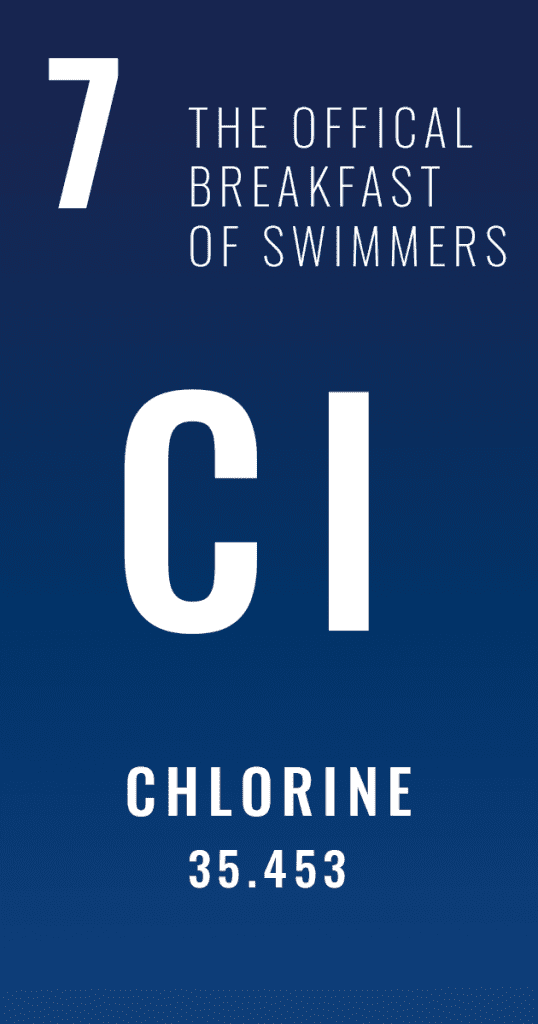
There is a bit of an art to keeping chlorine levels in check, as too little chlorine will allow bacteria to grow and too much will cause skin and mucous membrane irritation, but chlorine sanitization is more labor than rocket science. The average public pool should have somewhere between 3 and 5 parts per million of free chlorine, while jacuzzis may require up to 10 parts per million, due to the hot environment providing an incubator for bacteria.
Salt water pools are now common as well, but these too rely on chlorine. In a salt water pool a salt cell or generator breaks down the components of salt water via electrolysis. This reaction results in the formation of chlorine in basic and acidic analogs as sodium hypochlorite and hypochlorous acid, and these are used to sanitize the pool. Salt water pools can be a nice alternative to traditional chlorine pools, but they don’t feel like the ocean, since most residential salt systems require salt levels around 4200 parts per million, while the ocean has an average salt concentration of about 35,000 parts per million.
Bromine is a relatively recent alternative to chlorine. It is similar in structure and behavior to chlorine but less pH sensitive, and it’s reaction in water leaves bromide salts in solution which can be recycled. The downside to bromine, however, is that it’s very unstable in sunlight. Chlorine will degrade in sunlight somewhat, but Bromine quickly becomes ineffective in direct light. This means that it can be used to sanitize indoor pools but won’t do much good if used outdoors. Concentration levels for most pools are similar to chlorine, as are the side effects and signs of overuse.
Cyanuric acid is the solution to the instability of chlorine in strong ultraviolet light. The acid can be added to a pool to stabilize the chlorine in solution. It does this by binding to the sodium hypochlorite ions released by the chlorine after reaction with pool water, and shielding them from UV rays. This allows free chlorine to be effective approximately three times as long as it would otherwise be. Because Cyanuric Acid binds to active sites on the hypochlorite ions, it can decrease the active sites available for reactions with target pathogens, so levels that are too high will reduce chlorine’s effectiveness and may require fresh water dilution.
Watersports anyone?
If there’s one thing divers are good at, it’s producing astonishing amounts of urine as soon as they put on a wetsuit. Unfortunately for us, neither dive equipment or urine reacts well with chlorine. There are no color-changing indicators to show who pees in a pool right now, but pee does react with chlorine to produce chloramines.
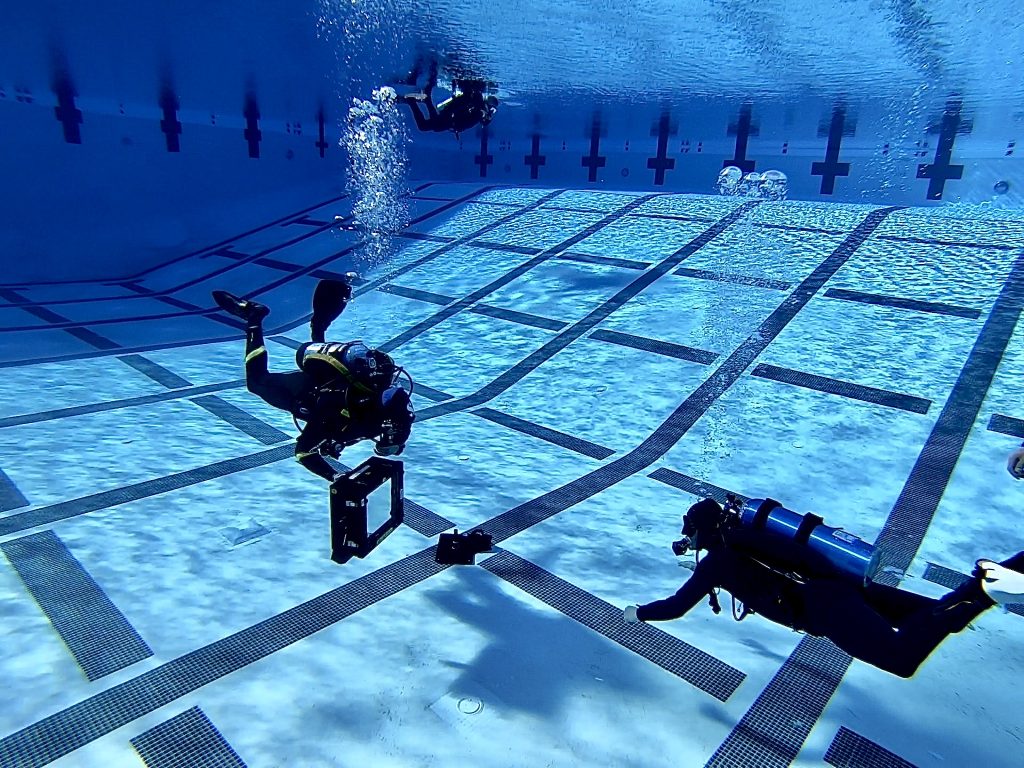
This is a two-part concern for us, and serious enough that the CDC has to send out warnings every year. Pool urination simultaneously removes free chlorine from the pool, decreasing the pool’s ability to self-sanitize, and creates a chemical irritant called chloramines. The byproduct of the reaction of chlorine with the amines in urine, chloramines cause respiratory irritation, skin rashes and can irritate the eyes and mucus membranes. They also produce the smell we typically associate with over-chlorinated pools.
As if that wasn’t enough, chlorine also degrades rubber like that’s it’s job. Black harnesses will fade to brown, o-rings and wing bladders will degrade, and regulators will need shortened maintenance intervals. Want to save your gear, your pool and your skin? Pee before you dive, rinse your gear well and keep that pool chlorinated.
Want to save your gear, your pool and your skin? Pee before you dive, rinse your gear well and keep that pool chlorinated.
Dive Deeper:
W. Bunker: The Hygiene of the Swimming Pool, American Journal of Public Hygiene, 1910 (20:4), 810-812.)
The BBC: University Of Alberta Scientists Study Urine Levels In Pools
For more information on pool safety: CDC Healthy Swimming Resource
House Method: How to Childproof your Yard (And Pool)

Reilly Fogarty is a team leader for risk mitigation initiatives at Divers Alert Network (DAN). When not working on safety programs for DAN, he can be found running technical charters and teaching rebreather diving in Gloucester, Mass. Reilly is a USCG licensed captain whose professional background includes surgical and wilderness emergency medicine as well as dive shop management.




















